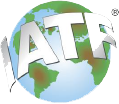IATF 16949

(1) Background
ISO/TS 16949 (1st edition) was originally created in 1999 by the International Automotive Task Force (IATF) with the aim of harmonizing the different assessment and certification systems worldwide in the supply chain for the automotive sector. Other revisions were created (2nd edition in 2002, and 3rd edition in 2009) as necessary for either automotive sector enhancements or ISO 9001 revisions.
In preparation for migrating from ISO/TS 16949:2009 (3rd edition) to this Automotive QMS Standard, feedback was solicited from certification bodies, auditors, suppliers, and OEMs to create IATF 16949:2016 (1st edition), which cancels and replaces ISO/TS 16949:2009 (3rd edition).
(2) Benefits of IATF 16949 Certification
- Improvement of product and quality control
- Gaining credibility among international trades
- Avoiding product defects and minimizing waste
- Reducing change risk in supply chain
- No need for multiple certification
(3) Structure
- a. IATF: International Automotive Task Force is a group of automotive manufacturers and their respective trade associations, formed to provide improved quality products to automotive customers worldwide.
- b. IAOB (International Automotive Oversight Bureau): One of 5 oversight offices created by IATF to oversee the certification bodies who perform the audits and issue certificates i.e. ANFIA, IAOB, IATF France, SMMT, VDA/QMC.
- c. AIAG (Automotive Action Industry Group): Collaborates with IATF and 5 Oversight groups developing standard and core tools (FMEA, Control Plan, SPC, MSA, etc.)
(4) IATF Members
- a. Automobile Manufactures
- BMW Group
- Daimler AG
- Fiat Auto
- Ford
- General Motors
- PSA (Peugeot Citroen)
- Renault
- Volkswagen AG - b. National Trade Associations
- AIAG (USA)
- ANFIA (Italy)
- FIEV (France)
- SMMT (UK)
- VDA (Germany)


